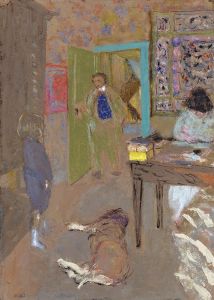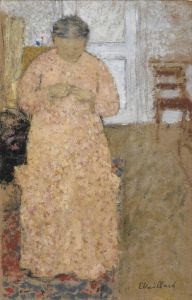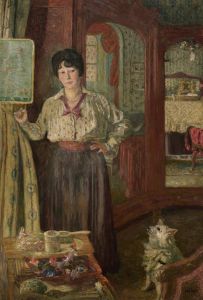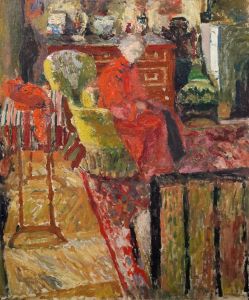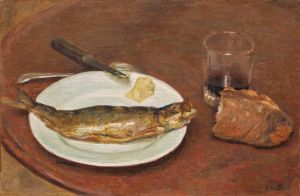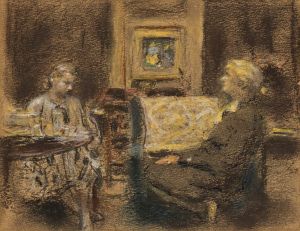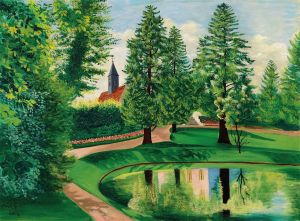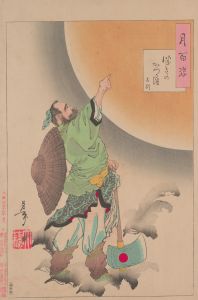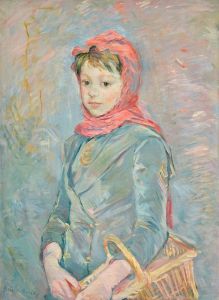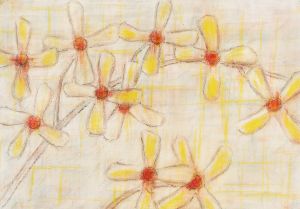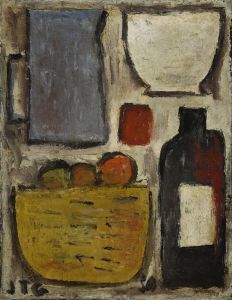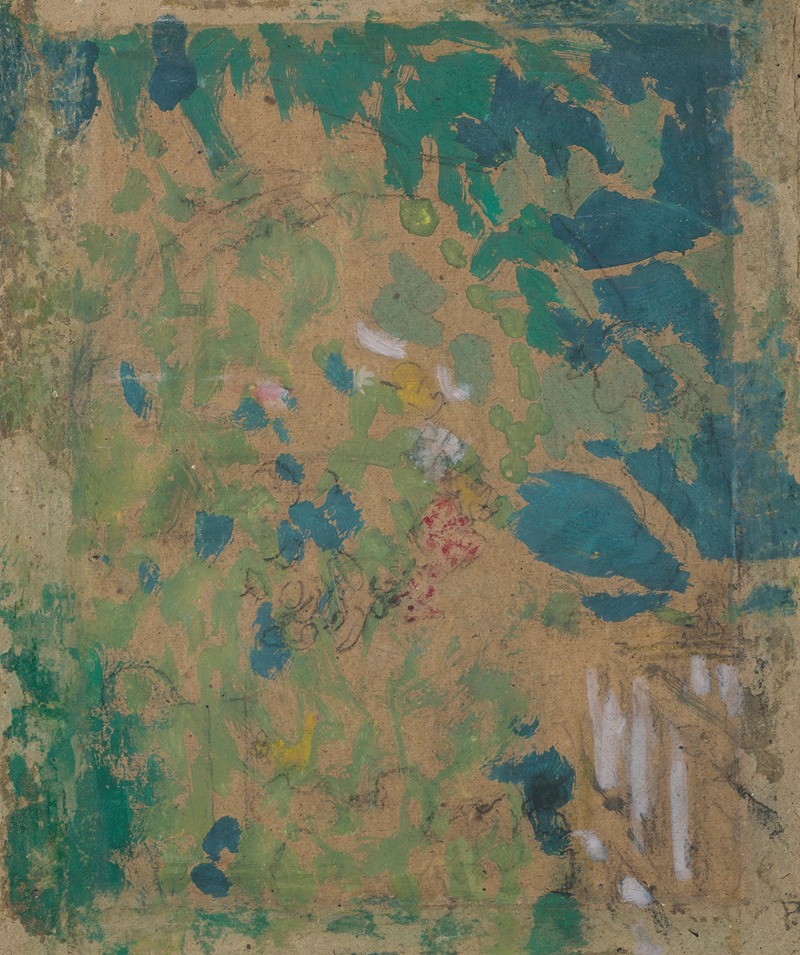
Le Jardin de la Closerie des Genêts
A hand-painted replica of Édouard Vuillard’s masterpiece Le Jardin de la Closerie des Genêts, meticulously crafted by professional artists to capture the true essence of the original. Each piece is created with museum-quality canvas and rare mineral pigments, carefully painted by experienced artists with delicate brushstrokes and rich, layered colors to perfectly recreate the texture of the original artwork. Unlike machine-printed reproductions, this hand-painted version brings the painting to life, infused with the artist’s emotions and skill in every stroke. Whether for personal collection or home decoration, it instantly elevates the artistic atmosphere of any space.
Édouard Vuillard, a prominent French painter associated with the Nabi movement, created the painting "Le Jardin de la Closerie des Genêts" in 1900. Vuillard is renowned for his intimate domestic interiors and lush, decorative style, which often features rich patterns and a subtle interplay of light and shadow. His work is characterized by a focus on the private and personal, often depicting scenes from his own life or those of his close friends and family.
"Le Jardin de la Closerie des Genêts" exemplifies Vuillard's ability to capture the serene beauty of everyday life. The painting depicts a garden scene, a subject that Vuillard frequently explored, reflecting his interest in the interplay between interior and exterior spaces. Gardens, for Vuillard, were not only places of natural beauty but also extensions of the domestic sphere, offering a tranquil retreat from the bustling city life.
In this particular work, Vuillard employs a soft, muted palette, which is typical of his style. The colors are harmoniously blended, creating a sense of calm and cohesion throughout the composition. The brushwork is delicate and nuanced, with an emphasis on texture and pattern that draws the viewer into the scene. Vuillard's attention to detail is evident in the way he captures the dappled light filtering through the foliage, creating a play of light and shadow that adds depth and dimension to the painting.
Vuillard's technique often involved the use of distemper, a type of paint made by mixing pigments with a binding medium such as glue. This method allowed him to achieve a matte finish and subtle gradations of color, which are evident in "Le Jardin de la Closerie des Genêts." The painting's surface is smooth and even, with a gentle luminosity that enhances the overall sense of tranquility.
The composition of the painting is carefully balanced, with the garden's elements arranged in a way that guides the viewer's eye through the scene. Vuillard's use of perspective is subtle, creating a sense of depth without relying on dramatic vanishing points or exaggerated spatial relationships. Instead, he focuses on the intimate details of the garden, inviting the viewer to linger and explore the scene at a leisurely pace.
Vuillard's work is often associated with the Symbolist movement, which emphasized the use of symbolic imagery and a focus on the emotional and spiritual aspects of art. In "Le Jardin de la Closerie des Genêts," the garden can be seen as a symbol of peace and introspection, a place where one can escape the complexities of modern life and find solace in nature.
Throughout his career, Vuillard maintained close ties with other members of the Nabi group, including Pierre Bonnard and Maurice Denis. The Nabis were known for their innovative approach to color and composition, drawing inspiration from Japanese prints and the decorative arts. Vuillard's work, including "Le Jardin de la Closerie des Genêts," reflects these influences, with its emphasis on pattern, color harmony, and the integration of art into everyday life.
Today, Édouard Vuillard is celebrated as one of the leading figures of the Post-Impressionist movement, and his works are held in major collections around the world. "Le Jardin de la Closerie des Genêts" remains a testament to his skill as a painter and his ability to capture the quiet beauty of the world around him.





